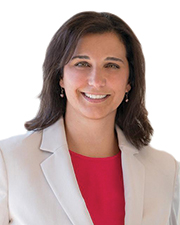Understanding logistics and supply chain for imports - by Rob Nahigian
Why not use the Panama Canal? It only had 2 canals and could not handle more than 7-8000 TEU ships. It was losing business. Therefore in mid-2000’s a decision was made to invest $5 billion to build a third canal to handle larger ships. But a new problem arose, the east coast ports are as old as the colonialists. Shallow harbors, low car bridge clearance, traffic to unload ships and the lack of accessibility for trucks or rail to transport to the mid-west distribution centers such as Chicago.
Answer: Ports up and down the east coast are spending billions of dollars for the Post-Panamax ships and competing for the shipping business. Miami, Savannah, Charleston, Norfolk, Baltimore, NYC and, yes, Boston are spending billions to dredge ports, raise bridges and prepare infrastructure. The Port of Entry will be selective and there are other problems once ships arrive. Ports can have union strikes, railroad bridges are too low for double stacked rail, trucks cannot clear highway overheads, and airport runways may not be adequate in length for cargo ships. These issues are being mitigated. Rail companies are building new tunnels to transport from the east coast through the Shenandoah Valley. Some airports have the proper runway lengths while others will be avoided. New distribution centers of over 1 million s/f require large acreage that can be found in the Lehigh Valley but perhaps not Cape Cod. Then there is the question of locating close to the population base so that a trucker can drive a 200 mile day and reach the majority of the customer base. Buyers want to order products on-line and have it delivered in 24 hours or less. Amazon wants to get the delivery time down to 2 hours from “click to pick.”
Conclusion: The projected trend was that 35% of imported business would move to the east coast. That is still arguable. The Suez Canal has also played an alternative role to the Panama Canal in 2016. The shift to the east coast however is real. Distribution growth has increased and there is a new trend for a decentralized regional site selection model. Logistics hubs are developed 200 miles from port with access by rail. The newest trend that could throw off this entire model in 2017 is 3D printing which has accelerated in the Northwest Ohio market. Additionally, president-elect Trump is promoting plans to encourage manufacturing companies back to the U.S. thus cutting out the need for intermodal transportation from abroad. JC Cannistraro, LLC is an example of a Boston based firm that decided to relocate its manufacturing base to the Boston Harbor Seaport area rather than flee the state. Products “Made in China” may be a trend of the past.
Rob Nahigian, FRICS, SIOR, CRE, MCR, is principal at Auburndale Realty Co., Newton, Mass.
Eastern Bank donates $2 million to Lynn Public Schools


It’s a confusing real estate world: Don’t you think? - by Daniel Calano

The focus on price per s/f compared to the comparable sales used in the appraisal report - by Dennis Chanski

Real estate without good estate planning - a troublesome problem - by Daniel Calano










.png)